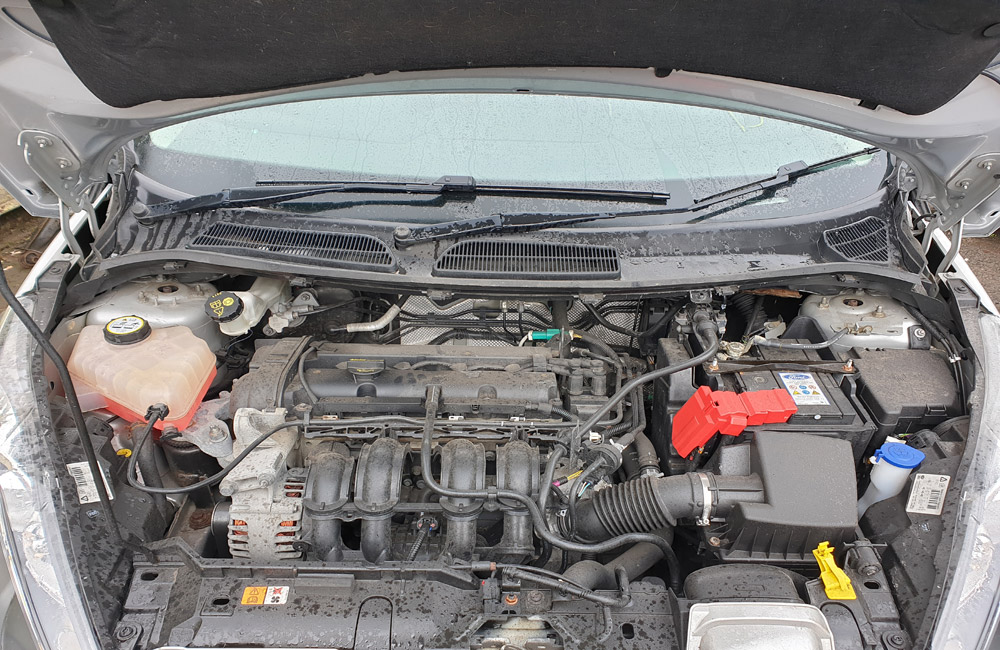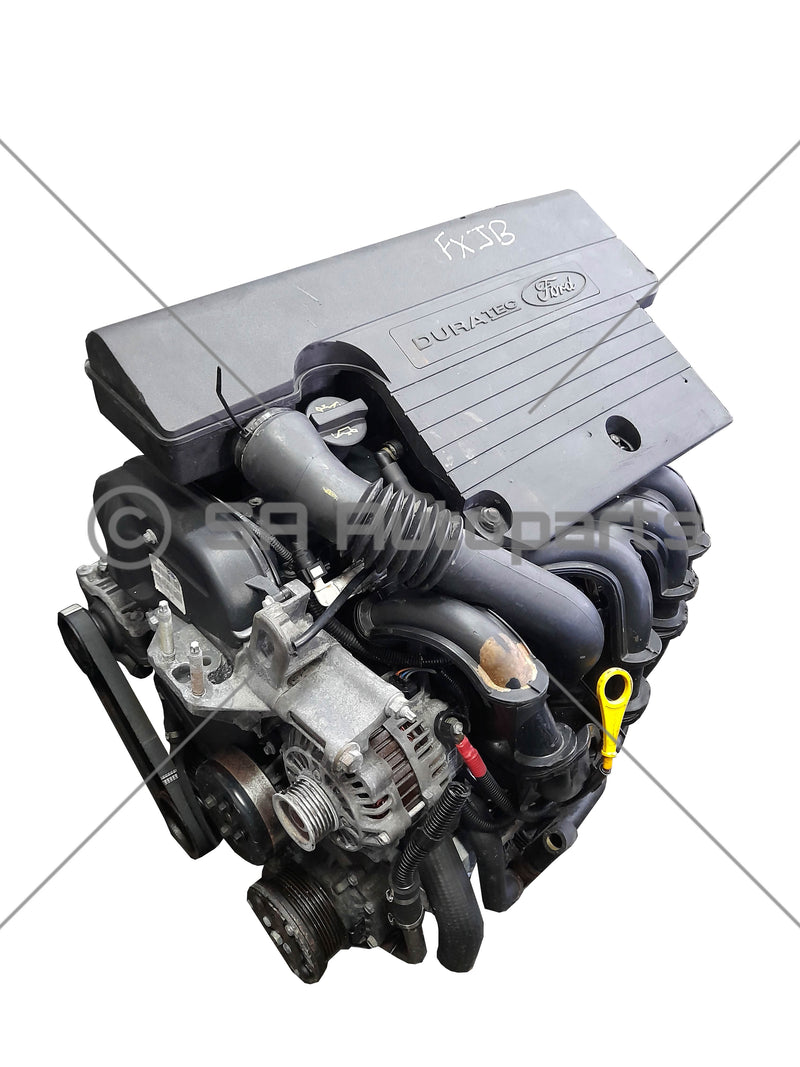Why Choosing the Right Ford Fiesta Engine Parts Matters for Longevity
Why Choosing the Right Ford Fiesta Engine Parts Matters for Longevity
Blog Article
Opening the Power of Engines: A Comprehensive Overview to Performance and Efficiency
Comprehending the elaborate auto mechanics of engines is crucial for both efficiency fanatics and daily drivers. The responses may redefine our technique to engine performance and effectiveness in ways that are both informing and essential.
Comprehending Engine Basics
What makes up the basic technicians of an engine? At its core, an engine is an equipment designed to convert fuel right into power with a series of regulated explosions or combustion procedures. The main elements consist of the cylinder, piston, crankshaft, camshaft, and shutoffs. The cylinder functions as the chamber where burning occurs, while the piston moves within the cylinder to convert the energy from combustion right into linear motion (ford fiesta engine).
The crankshaft then transforms this straight activity into rotational power, which ultimately powers the car. The camshaft manages the opening and closing of the shutoffs, managing the consumption of air and fuel and the expulsion of exhaust gases. Additionally, the engine relies upon a carefully adjusted fuel-air combination, ignition system, and cooling down system to guarantee optimum efficiency and performance.
Comprehending engine essentials also includes recognizing the importance of engine cycles, such as the four-stroke cycle, which consists of consumption, compression, power, and exhaust strokes. Each phase is important in ensuring the engine functions smoothly and effectively. Mastery of these essential technicians prepares for discovering extra complex engine dynamics and efficiency metrics, important for enhancing both power outcome and efficiency.
Key Efficiency Metrics
Secret performance metrics are necessary for evaluating an engine's efficiency and power result, supplying beneficial understandings for both customers and producers. These metrics function as criteria for engine performance, enabling notified choices in buying, layout, and production.
One of the main metrics is horsepower, which quantifies the engine's capability to do work over time. Torque, gauged in pound-feet, is another important statistics that suggests the engine's rotational pressure, directly affecting velocity and hauling ability. Fuel effectiveness, commonly measured in miles per gallon (MPG) or litres per 100 kilometers (L/100km), examines just how efficiently the engine transforms fuel into motion, influencing ecological considerations and operational expenses.
Furthermore, thermal effectiveness procedures just how well an engine converts fuel power right into beneficial work, exposing insights right into energy losses primarily with warm. Emission levels, including CO2 and NOx, are additionally critical, mirroring the engine's environmental effect and conformity with regulatory requirements.

Tuning Techniques for Performance
Tuning techniques play a significant function in improving engine performance by maximizing efficiency metrics official site recognized in earlier conversations (ford fiesta engine). Numerous methods exist to make improvements an engine, each adding to boosted fuel economic climate and reduced emissions
One efficient strategy is readjusting the air-fuel ratio, guaranteeing the engine runs within the optimum burning regimen. A leaner mixture can boost fuel performance, but it needs to be balanced to stop misfires or engine knock. Furthermore, reprogramming the engine monitoring system can recalibrate parameters such as ignition timing, which even more boosts efficiency while maintaining power output.
Another essential technique includes modifying the consumption and exhaust systems. Upgrading to high-performance air filters and exhaust headers can reduce back pressure, assisting in better airflow. This allows the engine to breathe more freely, causing enhanced burning performance.
Furthermore, the application of sophisticated tuning tools, like dyno testing, supplies exact data that enables targeted changes. Consistently checking these performance metrics ensures that adjusting efforts generate the desired performance outcomes. Jointly, these strategies not just boost engine performance however also add to long-term sustainability in engine procedures.
Upkeep for Ideal Efficiency
Regular engine upkeep is important for attaining optimal efficiency and long life. A well-kept engine not just operates effectively yet also lessens the risk of expensive fixings and break downs. Trick components needing normal attention include oil, filters, belts, and ignition system.
Changing the engine oil at suggested periods is important, as oil lubes moving parts and protects against overheating. In a similar way, replacing oil and air filters makes sure that impurities do not impair engine function. Neglecting these elements can cause lowered performance and potential engine damages.
In addition, examining and replacing worn belts and pipes is essential to avoid sudden failures. Timing belts, in specific, ought to be replaced according to the maker's routine to stay clear of tragic engine damages.
Ignition system need to additionally be examined and changed as essential, given that they play an important function try this in ignition and fuel effectiveness.
Future Patterns in Engine Modern Technology
Welcoming improvements in innovation, the future of engine design is positioned to transform performance and performance across various applications. Crossbreed and fully electrical powertrains are coming to be progressively mainstream, providing decreased exhausts and boosted fuel performance.
Moreover, technologies in materials scientific research are causing lighter, stronger elements that enhance engine efficiency while reducing power consumption. Advanced manufacturing strategies, such as 3D printing, enable the production of complex geometries that boost airflow and thermal administration, thus enhancing burning processes.
Furthermore, the integration of expert system and artificial intelligence is readied to transform engine diagnostics and efficiency tuning. These innovations can assess vast amounts of information in real time, enabling anticipating upkeep and customized performance enhancements.
Final Thought
To conclude, opening the power of engines requires an extensive understanding of their technicians and efficiency metrics. Implementing efficient adjusting strategies and adhering to routine upkeep practices considerably improve engine capabilities. As the automobile landscape progresses, welcoming future fads in technology, including electrification and advanced production, will certainly be critical for enhancing efficiency and performance. This comprehensive approach not only benefits lovers however likewise contributes to sustainable options in the world of auto design.
Furthermore, the engine depends on a carefully adjusted fuel-air combination, ignition system, and cooling system to ensure optimum performance and efficiency.
Recognizing engine basics additionally includes recognizing the significance of engine cycles, such as the four-stroke cycle, which consists of intake, exhaust, compression, and power strokes. Mastery of these basic auto mechanics lays the foundation for exploring extra complicated engine characteristics and performance metrics, crucial for enhancing both power result and efficiency.

Embracing advancements in technology, you can find out more the future of engine style is poised to transform performance and efficiency across different applications.
Report this page